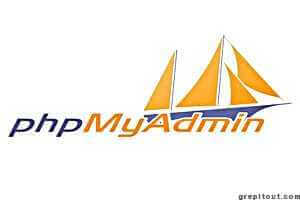Install phpMyAdmin in an account
The phpMyAdmin is an open source tool which is used for the administration of databases via the web browser. It is developed using PHP. We can perform various tasks like creating, modifying or deleting databases, tables, fields or rows and managing users and permissions.
Here I am going to explain the procedures to install phpMyAdmin in an account. Generally, we can access the phpMyAdmin via cPanel. So we need to provide the cPanel username and password to the database administrator.
You can install phpMyAdmin in an account if you do not wish to reveal the cPanel credentials to the Database admin. Hence, database admin can login to the phpMyAdmin using a database user’s login details. Another advantage is that you can give access to the administrator only to the databases which you need to administrate. Also, you can set privileges on the databases for that particular MySQL user.
Install phpMyAdmin in an account:
1. Login to the server using SSH and go to the user’s document root.
cd /home/$USER/public_html
2. Get the compressed file to install. Please make sure that the phpMyAdmin version is compatible with the PHP version installed on your server.
You can download different versions of phpMyAdmin from Here
wget http://sourceforge.net/projects/phpmyadmin/files/phpMyAdmin/4.4.4/phpMyAdmin-4.4.4-all-languages.zip
3. Unzip the downloaded file.
unzip phpMyAdmin-4.4.4-all-languages.zip
4. Correct the ownership of the file.
chown -R $USER:$USER phpMyAdmin-4.4.4-all-languages
5. Rename it.
mv phpMyAdmin-4.4.4-all-languages phpmyadmin
6. Copy and rename the file config.sample.inc.php in the directory phpmyadmin.
cd phpmyadmin cp -p config.sample.inc.php config.inc.php
7. You must fill the below line in the config.inc.php with anything if you wish to use COOKIE AUTH.
$cfg['blowfish_secret'] = ' ';
8. Please create web server writable folder config in the [highlight color=”gray”]phpmyadmin[/highlight] directory.
mkdir config chown $USER:$USER config
9. Please configure the phpMyAdmin using following url.
http://EXAMPLE.com/phpmyadmin/setup/
10. Delete the config directory for better security once the setup completed.
rm -rf config
11. Load the PhpMyAdmin page using the corresponding URL.
http://EXAMPLE.com/phpmyadmin/
Please substitute EXAMPLE.com with your actual domain name. Enter the database username and the corresponding password. Now you can proceed with the databases management.
If you like the post and wish to receive more articles from us, please like our FB page: If you like this post and wish to receive more articles from us, please like our FB page: Button
Your suggestions and feedbacks will encourage us and help to improve further, please feel free to write your comments.
For more details on our services, please drop us an E-mail at info@grepitout.com
























Add Comment